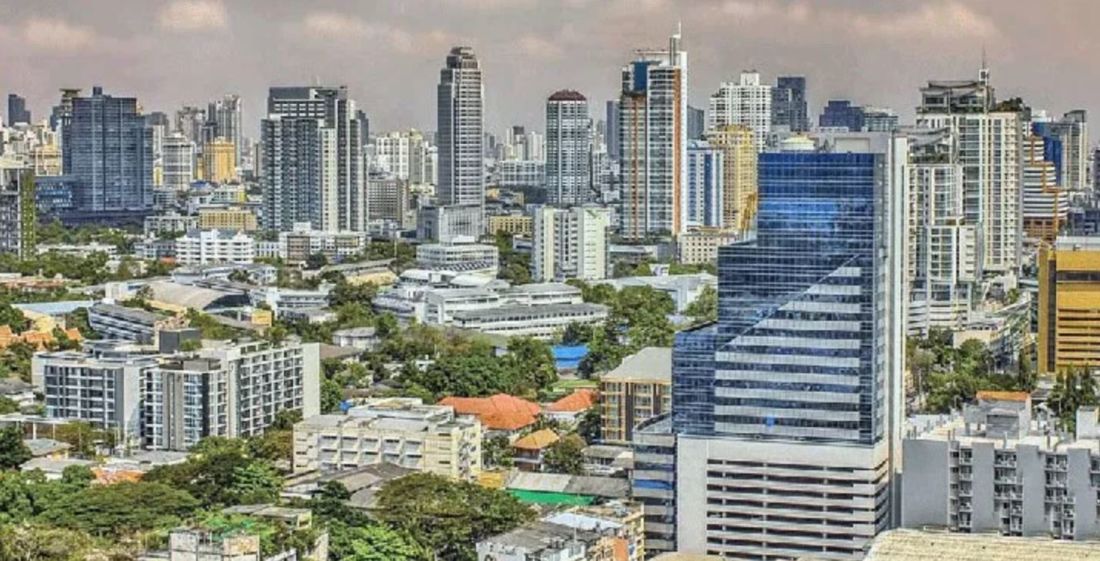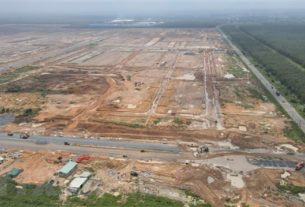While SMEs are crying over the blanket Bt300 wage, fierce competition in some industries and the scarcity of skilled workers is pushing the daily pay of some above Bt500.
For the past eight years, Narong Jampatho, 30, a tile layer, has never found difficulty in finding someone willing to pay him Bt700 per day, allowing him to earn Bt20,000 a month. Some of his relatives from Nong Bua Lamphu are also in Bangkok at his persuasion.
“It’s not a permanent job, but I enjoy my freedom. I work to get paid and rest when I want to. Working for a company is tiring and pays less. The government’s wage hike policy has no merit for us, as we’ve been earning at least Bt500 a day since the floods,” he said.
Narong is one of about 10,000 workers living along Keep Moo Road, which, according to the master’s thesis of a Sri Pathum University student, is now the country’s largest day labour market, mostly for the construction industry.
Most are from northeastern provinces like Buri Ram, Si Sa Ket and Surin. Mixing with them are migrants from Myanmar, Cambodia and Laos who can speak Thai. They demand at least Bt500 a day, while the very skilled ones can command Bt900.
Prakiat Kaewkhamharn, 48, an electrical system contractor, said he pays Bt600 for tile layers. “It’s high but we have to take it, as we can’t find other workers.”
At dawn every day, the day workers line up for one kilometre on the small road, which connects to Ram Intra Road, waiting for contractors or employers. It has become the usual scene for contractors in their pickup trucks to show up, while even individuals who want to do small-scale renovations to their houses bypass builders and come and pick up workers with the skills they require.
BURGEONING DEMAND FOR SKILLED WORKERS
For big or small projects, wage negotiations are necessary as the skilled workers quote at least Bt500. These contractors have to yield to get the best workers at the lowest rates.
Thanks to the burgeoning demand for skilled workers due to the 2011 flood and recovery in property sales, these workers can insist on above-normal rates for their work.
Five years ago, only 3,000 workers sold their labour here, estimates Prasit Sakuma, a Muslim community leader. Their numbers shot up last year, when the need for extra labour to fix flood damage was very high. About 70-80 per cent of them would find jobs every day, while the rest, who had low skills or were choosy or lazy, could get hired every few days.
According to the thesis authored in 2011 by Phinyo Bunchuay, the community’s original members were only 935, mostly Muslims, in 185 households. The paper’s estimate of the total pool of workers by then is 5,000-8,000.
“The workers bring in good money, with Bt2.5 million in cash circulating every day. The areas that used to be farms and weed patches are now full of housing and apartments,” said Usaman Kaewkes, leader of a nearby Muslim community that shares the Arabic name of Keep Moo with an old mosque in the neighbourhood.
Most of the many accommodations for low-income earners are low-priced quarters built in and around the road. The area is also filled with mom-and-pop shops and grocery stores whose sales have surged along with the increase of workers living there and those living elsewhere who come and go.
Land prices have also soared to Bt10 million per rai from Bt2 million just 10 years ago.
However, the hordes of workers migrating to Bangkok looking for better opportunities means more crime, and especially frequent drunken brawls among workers, which is not welcomed by the original, mostly Muslim residents of the area.
The Islamic culture was under threat, with booze being widely sold and drunk. However, about 80 per cent of the workers behave and police have taken care of the troublemakers.
Keep Moo Road could grow more famous, as the labour deficit – now topping the list of business risks for property and construction firms in 2013 – could worsen. With a low unemployment rate of 0.6 per cent, or only 232,400 jobless, the construction, infrastructure and manufacturing industries are now facing a shortfall of about 200,000 hands.
Bank of Thailand data also show that the labour market has tightened. Employment was up 0.7 per cent to 39.2 million as of September from the same month last year, while the average paycheque also rose by 7.9 per cent.
The rush for manpower is anticipated to pick up when the government’s mega infrastructure projects are kicked off. While they will attract minimum-wage workers, it also means abundant openings are out there for skilled ones who can charge well above Bt300 a day.
Keep Moo Road: located in northern Bangkok, off Ram-Indra Road
Population
10,000 Workers
935 residents, mostly Muslims
Daily hire rates
Bt500 for basic labour
Bt500-Bt900 for skilled work
Skilled workers:
breakdown in types of work
Bt600-Bt700: Tiler
Bt800: Welder
Bt600-Bt900: Plasterer
Bt600-Bt800: Carpenter
Bt600-Bt700: Electrician
Bt700: Painter
Bt500-Bt600: Planter/gardener
Source: http://www.thaivisa.com/forum/topic/614938-skilled-labourers-see-daily-wages-climb-thailand/



Well done and good on them.
The Thai worker whether a a Labourer,Teacher,Engineer,Farmer (most importent people in Thailand)or even an MP can now due the booming economy earn a decent wage and why not they deserve it…not too sure about the MP.